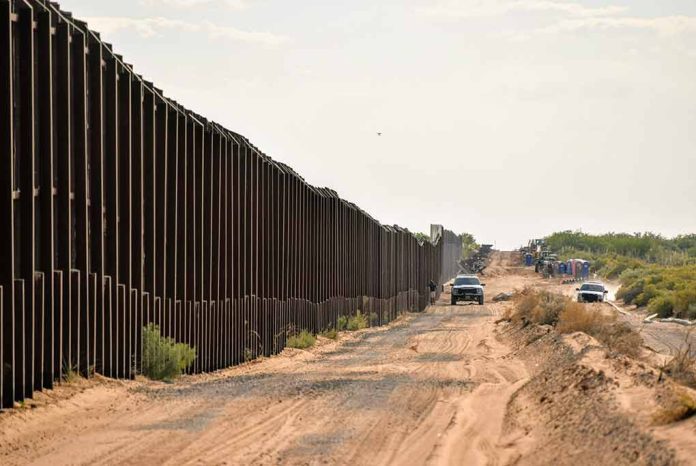
Democratic Congressman Henry Cuellar stunned critics by praising President Trump’s innovative border security strategy that designates parts of the southern border as military zones, calling the approach “very creative” while acknowledging its effectiveness in deterring illegal crossings.
Key Takeaways
- President Trump has established a second expanded military zone at the southwestern border, adding a 63-mile strip near El Paso as part of Fort Bliss to be patrolled by U.S. soldiers.
- Migrants entering these newly designated military installations will be considered trespassers and can be temporarily detained by troops until Border Patrol agents arrive.
- Democratic Representative Henry Cuellar praised the strategy as “very creative,” showing rare bipartisan support for Trump’s border security measures.
- Nearly 8,000 active-duty troops, spy planes, and Navy warships have been deployed to strengthen the southern border security infrastructure.
- The military zone designation allows for enhanced security without violating the Posse Comitatus Act, which restricts using military for direct law enforcement.
Strategic Military Zone Expansion
The Pentagon has significantly strengthened border security by establishing a second expanded military zone along the southwestern border. This new designation transforms a narrow 63-mile strip of land near El Paso, Texas, into an extension of Fort Bliss, effectively creating a military barrier against illegal crossings. The strategy represents a major advancement in President Trump’s border security agenda, utilizing existing military installations to create a more robust defense against unauthorized entry while respecting legal boundaries that separate military and civilian law enforcement roles.
“The establishment of a second national defense area increases our operational reach and effectiveness in denying illegal activity along the southern border,” said Gen. Gregory M. Guillot.
This innovative approach allows the military to temporarily detain individuals who cross into these designated zones by classifying them as trespassers on military property rather than immigration violators. Under this framework, individuals are held only until Border Patrol agents arrive to take appropriate action. This strategy represents a brilliant legal solution that enhances border security while maintaining proper separation between military operations and civilian immigration enforcement, addressing a challenge that has plagued previous administrations.
Bipartisan Recognition of Effective Strategy
In a remarkable show of bipartisan acknowledgment, Democratic Representative Henry Cuellar of Texas praised President Trump’s border security strategy during a “NewsNation Now” broadcast. Cuellar described the administration’s designation of border segments as military zones as “very creative,” acknowledging the effectiveness of this novel approach. This rare moment of cross-party agreement highlights the undeniable success of Trump’s border security initiatives, even among those who might typically oppose his policies.
While supporting the military zone strategy, Cuellar emphasized the importance of maintaining proper boundaries between military and civilian law enforcement roles. His nuanced position demonstrates the careful legal balance the Trump administration has achieved—creating a stronger deterrent at the border while ensuring military personnel operate within their proper constitutional scope. The deployment of nearly 8,000 active-duty troops along with advanced surveillance technology has dramatically enhanced border security without overstepping legal boundaries.
Legal Framework and Results
President Trump’s decision to designate border areas as military installations cleverly navigates around restrictions imposed by the Posse Comitatus Act, which limits military involvement in domestic law enforcement. By reclassifying these areas as extensions of existing military bases, troops can legally monitor and temporarily detain trespassers without directly engaging in immigration enforcement. This approach represents a masterful use of executive authority to address a pressing national security concern while respecting legal boundaries.
“Service members who are already detecting and monitoring through stationary positions and mobile patrols nearby can now temporarily detain trespassers until they are transferred to an appropriate law enforcement entity,” said Gen. Gregory M. Guillot.
The strategy has already shown significant results in deterring illegal crossings. President Trump has publicly noted the dramatic reduction in border crossing attempts, posting on social media that “the Invasion of our Country is OVER,” and adding that “very few people came” in the preceding month. These tangible results stand in stark contrast to the unprecedented migration crisis that had developed under previous policies, demonstrating the effectiveness of strong border enforcement when properly implemented through creative use of existing legal frameworks.









